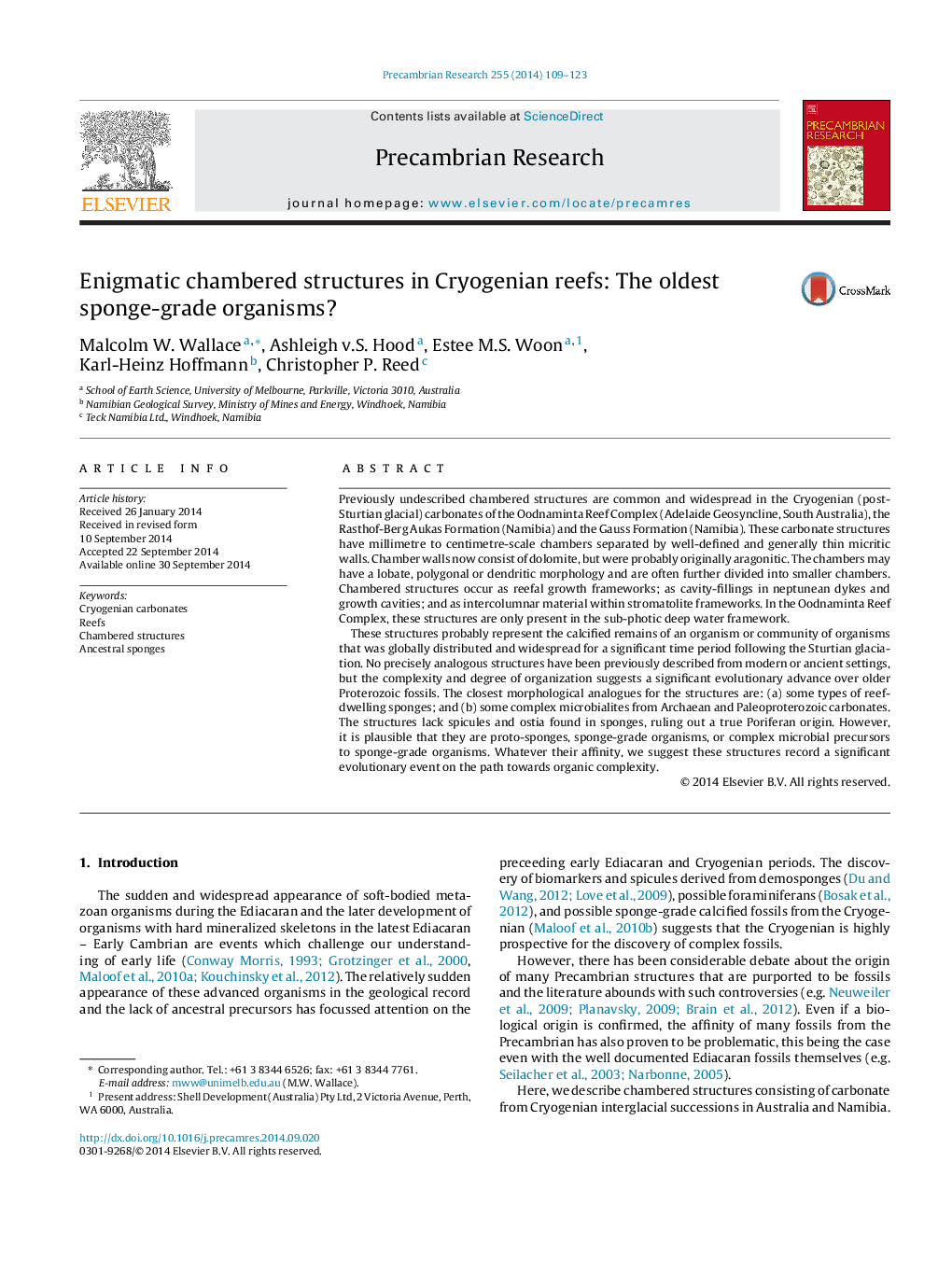| Article ID | Journal | Published Year | Pages | File Type |
|---|---|---|---|---|
| 4722779 | Precambrian Research | 2014 | 15 Pages |
•Complex chambered structures are widespread in Cryogenian carbonates.•The structures probably represent the remains of a globally distributed organism.•They most closely resemble some chambered reef-dwelling sponges.•The structures may represent sponges-grade organisms, or their microbial precursors.
Previously undescribed chambered structures are common and widespread in the Cryogenian (post-Sturtian glacial) carbonates of the Oodnaminta Reef Complex (Adelaide Geosyncline, South Australia), the Rasthof-Berg Aukas Formation (Namibia) and the Gauss Formation (Namibia). These carbonate structures have millimetre to centimetre-scale chambers separated by well-defined and generally thin micritic walls. Chamber walls now consist of dolomite, but were probably originally aragonitic. The chambers may have a lobate, polygonal or dendritic morphology and are often further divided into smaller chambers. Chambered structures occur as reefal growth frameworks; as cavity-fillings in neptunean dykes and growth cavities; and as intercolumnar material within stromatolite frameworks. In the Oodnaminta Reef Complex, these structures are only present in the sub-photic deep water framework.These structures probably represent the calcified remains of an organism or community of organisms that was globally distributed and widespread for a significant time period following the Sturtian glaciation. No precisely analogous structures have been previously described from modern or ancient settings, but the complexity and degree of organization suggests a significant evolutionary advance over older Proterozoic fossils. The closest morphological analogues for the structures are: (a) some types of reef-dwelling sponges; and (b) some complex microbialites from Archaean and Paleoproterozoic carbonates. The structures lack spicules and ostia found in sponges, ruling out a true Poriferan origin. However, it is plausible that they are proto-sponges, sponge-grade organisms, or complex microbial precursors to sponge-grade organisms. Whatever their affinity, we suggest these structures record a significant evolutionary event on the path towards organic complexity.
Graphical abstractFigure optionsDownload full-size imageDownload as PowerPoint slide
